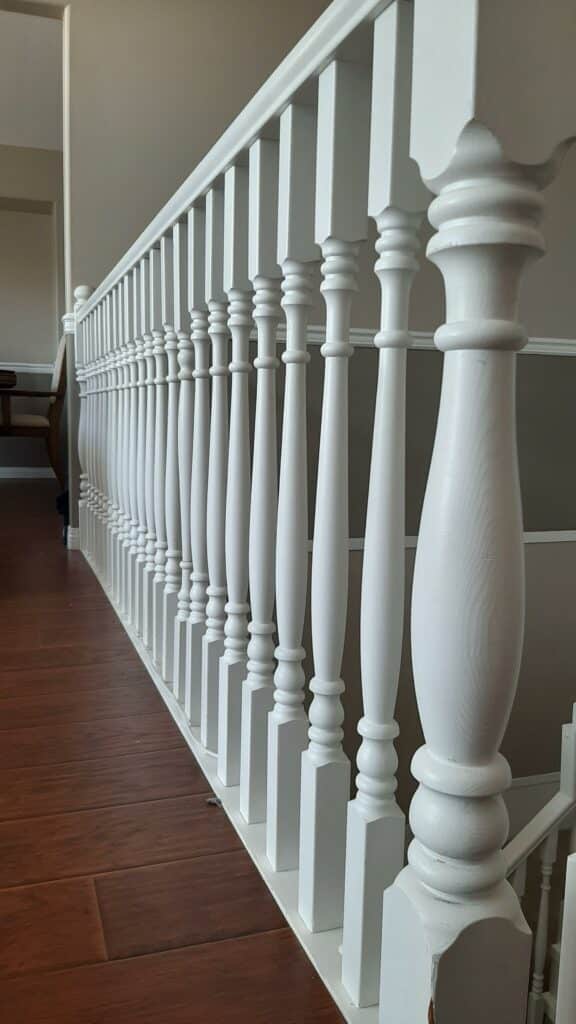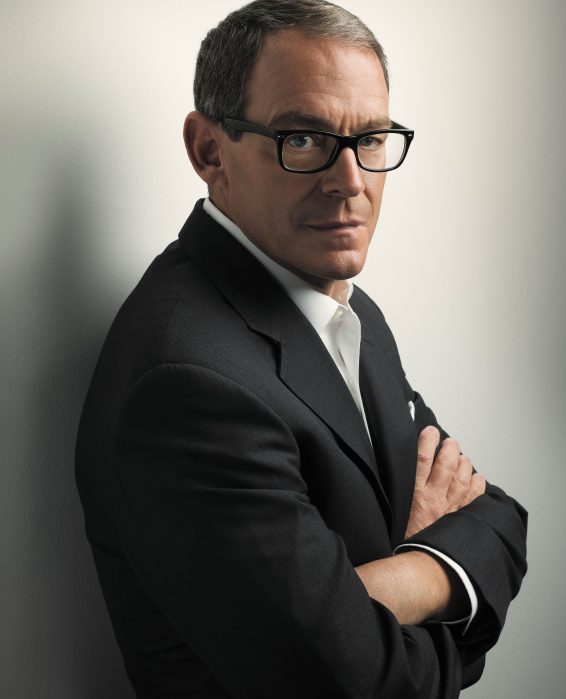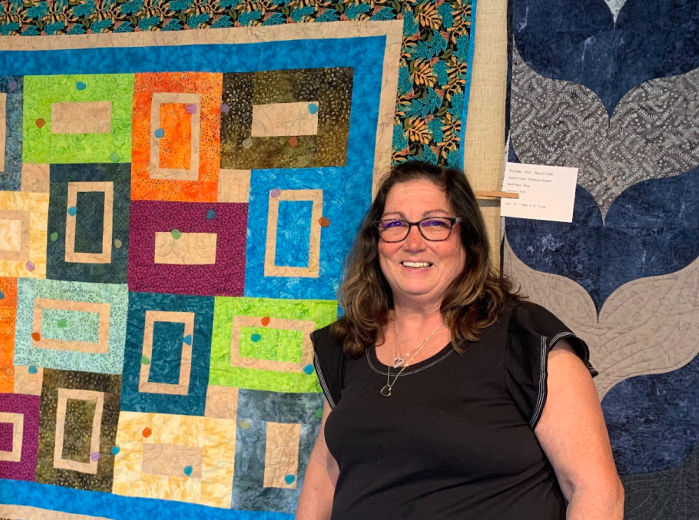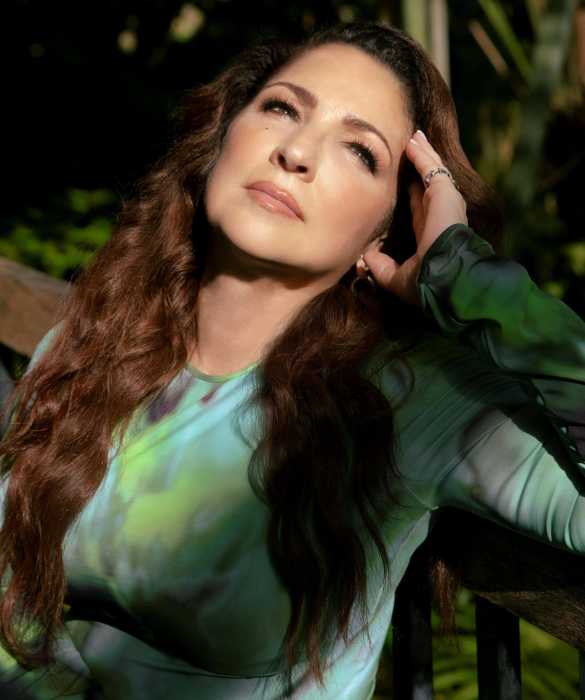Not long ago, my cat, Alice, more affectionately known as “the marshmallow,” was taunting the dog and leading her on a chase through the house. She ran to her favorite “safe base” when they normally play this game, to the stairs leading up to the second floor, on her favorite step that puts her just above the dog’s eye level.

These two continued to do battle for a few minutes longer until Alice realized she was losing and the game was not fun anymore. She knocked one of the spindles out of the railing trying to fit her fluffy body through the opening between spindles where she had made dozens of escapes from previously.
As I examined the destruction and wondering if it would be an easy fix, I noticed that all of the spindles along the handrail were not identical. The design carved along the length of each one was just slightly different, not obvious at a simple glance.
Coincidentally, I saw a Facebook post from a local contractors’ group, Contractors RoundTable, about something eerily similar. I began asking a few carpenter friends about this inconsistency and was intrigued to learn that it is not a mistake or a show of poor carpentry skills.
In the realm of construction, where precision and skill meet innovation, traditions and superstitions have managed to find their place, often adding a touch of mystique to the practical art of building. One such intriguing belief is the carpenter’s superstition of turning one spindle upside down when constructing a staircase. This seemingly whimsical practice is steeped in history, symbolism and a touch of the supernatural.

Origins And Symbolism
The origins of the superstition are thought to date back centuries to a time when architecture and spirituality were intricately intertwined. Staircases, serving as connectors between different levels of a structure, were believed to bridge the earthly realm with the spiritual or ethereal one. In this context, staircases were seen as potential pathways for spirits—both benevolent and malevolent—to traverse between worlds.
To counteract the perceived threat posed by evil spirits, carpenters began the practice of incorporating an upside-down spindle amidst the regular ones in a staircase’s balustrade. This solitary inversion was thought to disrupt the smooth progression of spirits, confusing and warding them off. The spindle, often placed inconspicuously, carried with it a protective significance, aligning the construction with spiritual beliefs.
Superstition and Warding Off Evil
The superstition of the upside-down spindle in staircase construction was based on the belief that evil spirits could only move in straight lines. The disrupted pattern created by the inverted spindle served as a deterrent, preventing these entities from navigating the staircase and infiltrating the living spaces above. In this way, carpenters sought to create not just functional structures, but ones that offered spiritual security as well.
Duality and Balance
Beyond its supernatural connotations, the superstition also touches on themes of duality and balance. The staircase itself represents a transition between two different states—ascending and descending, going from one level to another. By introducing an element of asymmetry through the upside-down spindle, a balance is created. This balance mirrors the equilibrium desired in both the physical structure and the spiritual protection it offers.

And now, everywhere that I go lately, I find myself examining the balusters for inconsistencies. Most recently, I was at Winnick House on the campus of Long Island University in Brookville for The Magnificent Lives of Marjorie Merriweather Post book talk with author Allison Pataki, hosted by Theodore’s Books in Oyster Bay. After sharing this piece that I had been working on, the entire room began examining the balusters for the hidden treasure. Although, in this particular case, the spindles were all hand-carved and full of natural inconsistencies, a demonstration of the finer craftsmanship from a long-ago era. Any purposeful imperfections might have been enough to drive Ms. Post wild considering her keen eye for detail and perfection.
A Fusion of Craftsmanship and Belief
The superstition encapsulates the intersection of craftsmanship and belief, reminding us that construction, though a technical pursuit, is also an art form with cultural and spiritual dimensions. Even in the face of modern skepticism, the tradition persists, showcasing the resilience of folklore and the human tendency to imbue the mundane with meaning.
I spoke to a couple of carpenters and learned three things about this oddity. Some carpenters told me that, while they know of carpentry superstitions, their clients prefer consistency instead of seemingly errored or mismatched shapes, sizes and out-of-order. Several carpenters had never heard of this homebuilding superstition.
One carpenter told me that his reasoning for installing one spindle upside-down or purposely adding inconsistencies in his work is rooted in his personal religious beliefs. He said Jesus was a carpenter and only Jesus is perfect.
Enduring Traditions
As construction practices have evolved over time, the superstition of the upside-down spindle has endured, often passed down through generations of carpenters. In an age where science and technology dominate the construction industry, this tradition stands as a testament to the enduring power of cultural beliefs. While some may view it as a mere curiosity, others continue to uphold it, recognizing its historical and symbolic importance.
Cultural Variations
It’s worth noting that this superstition, like many others, can have variations across different cultures and regions. While the core concept of using an inverted spindle for protection remains consistent, the specific reasons, rituals and beliefs associated with it may differ.
The superstition of turning one spindle upside down when building a staircase is a example of how cultural beliefs and practical craftsmanship can merge. This practice, rooted in ancient spirituality and protective symbolism, offers a glimpse into the connection of the physical and spiritual worlds.
































